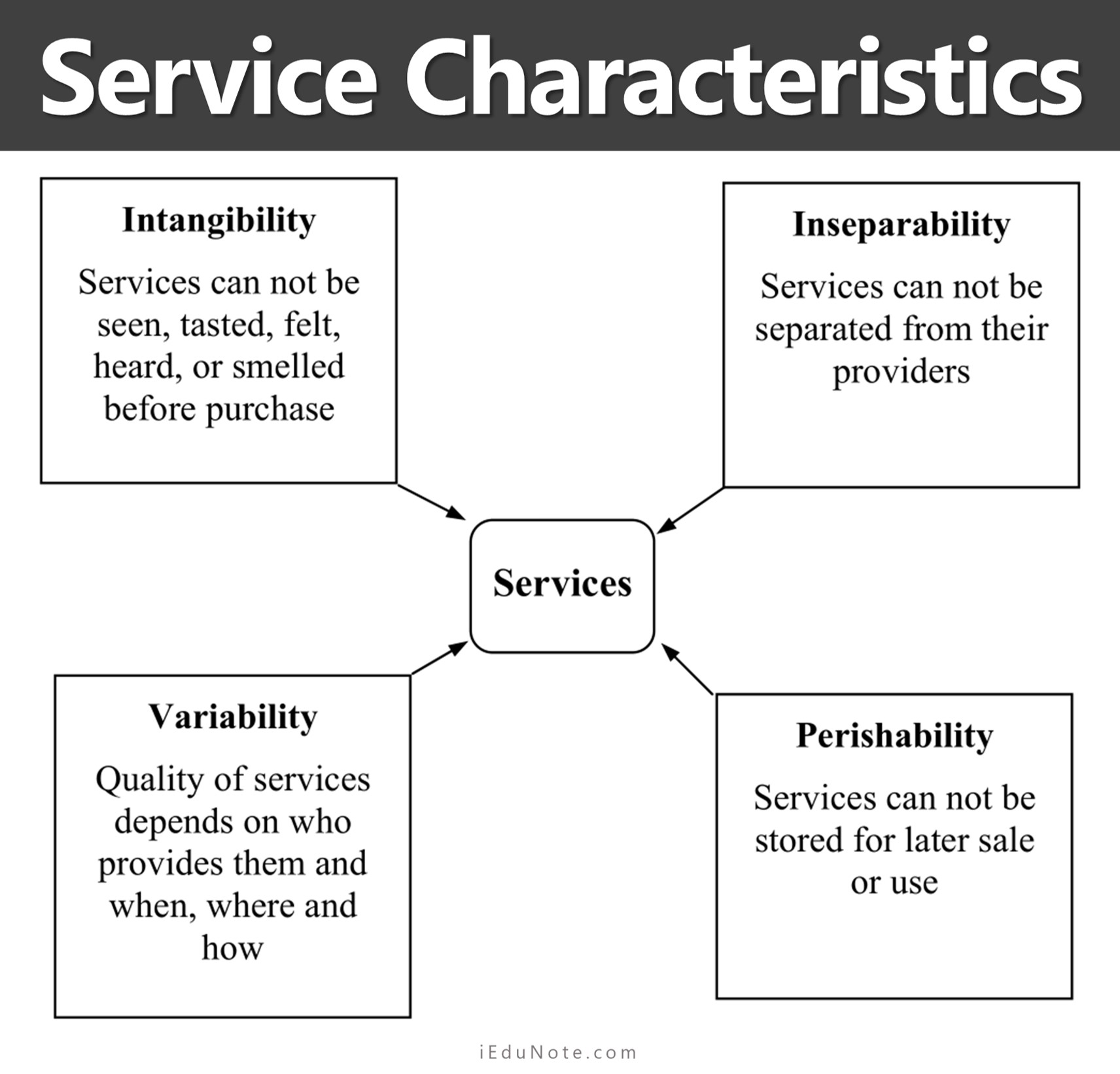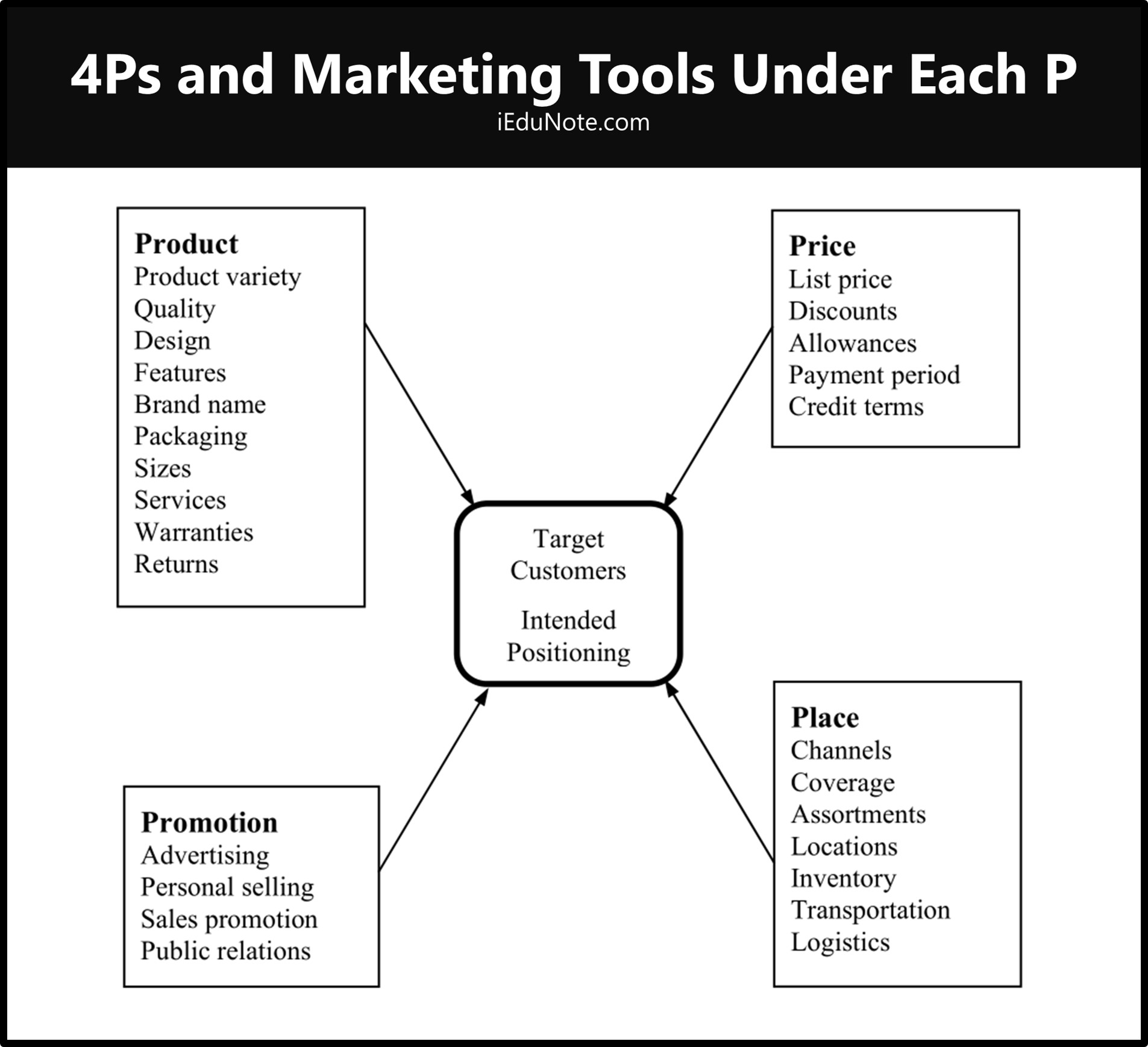A service is any activity or benefit that one party can offer to another that is essentially intangible and does not result in the ownership of anything.
Services do not always emerge out of physical products. When somebody rents a hotel room, deposits money in a bank, travels on an airplane, visits a physician, gets a haircut, gets a car repaired, watches a professional sport, watches a movie, and gets advice from a lawyer, he/she buys a service.
When designing marketing programs, a company must consider the characteristics of services.
Four characteristics of service are;
- intangibility,
- inseparability,
- variability and
- perishability.

Let’s discuss the 4 characteristics of the service.
Intangibility – Services Cannot Be Felt Before Buying.
Services are intangible in nature. It means that services can not be seen, tasted, felt, heard, or smelled before they are bought.
For example, an airline passenger has only a ticket and the promise of a safe and comfortable journey.
As the buyers are interested in service quality, the service provider must add tangible dimensions. The place, price, equipment, and communication material must indicate the service quality as claimed by the service provider.
Consider a bank that wants to convey the idea that its service is quick and efficient. It must make this positioning strategy tangible in every aspect of customer contact.
The bank’s physical setting must suggest quick and efficient service: Its exterior and interior should have clear lines; internal traffic flow should be planned carefully; waiting for lines should seem short at teller windows and ATMs, and background music should be light and upbeat. The bank’s staff should be busy and properly dressed.
The equipment – computers, copy machines, desks – should look modern. The bank’s ads and other communications should suggest efficiency, with clean and simple designs and carefully chosen words and photos that communicate the bank’s positioning.
The bank should choose a name and symbol for its service that suggest speed and efficiency. It is pricing for various services should be kept simple and clear.
Inseparability – Services Are Generated and Consumed Together.
Inseparability is a major characteristic of services. It means that services are generated and consumed simultaneously and can not be separated from their providers, whether they are people or machines.
As the customer remains present as the service is produced, provider customer interaction is important in services marketing. The result of services is affected by both the provider and the customer.
Variability – Service Quality Never Stay The Same.
Variability is another important characteristic of services, which means that their quality may vary greatly, depending on who provides them and when, where, and how they are provided.
For example, the Sheraton hotel has a reputation for providing better service than others.
One employee may be cheerful and efficient within a particular Sheraton hotel, while another may be unpleasant and slower. Even the quality of a single Sheraton employee’s service varies according to his or her energy and the state of mind at the time of each customer dealing.
Service variability can be managed in several ways. Employees can be selected and trained carefully to provide good service. Employee incentives can be introduced that emphasize service quality. Customer satisfaction can be checked regularly through suggestion and complaint systems, customer surveys, and comparison shopping.
Perishability – Services Cannot Be Stored.
Services are perishable, which means that services can not be stored for later sale or use. A ticket for the evening show of a movie can not be used for watching the night show.
The perishability of services has important implications for service providers. In the case of steady demand, perishability is not a problem.
But where demand fluctuates, service providers face adjustment problems.
For example, public transportation companies have to own much more equipment then they would as demand is not ever throughout the day.
Service providers can several steps to make better demand-supply adjustments.
Different prices can be charged at different times on the demand side, which will shift some demand from peak periods to off-peak periods. On the supply side, part-time employees can be hired to cater to peak demand.

